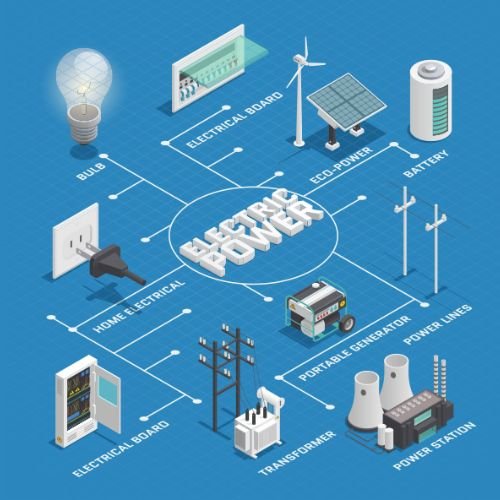Microgrid Solar System
A microgrid solar system is a localized power grid that can operate independently or in conjunction with the traditional centralized electrical grid. It consists primarily of solar panels for generating electricity, along with energy storage systems such as batteries, and sometimes backup generators or other renewable energy sources like wind or biomass. Microgrids can be designed to provide power to a single facility, a cluster of buildings, a neighborhood, or even an entire remote community.
Here are some key components and features of microgrid solar systems:
- Solar Panels: These are the primary energy generation source in a microgrid solar system. Solar panels convert sunlight into electricity through the photovoltaic effect. They can be installed on rooftops, in open fields, or on other available surfaces with adequate sunlight exposure.
- Energy Storage Systems: Batteries are essential components of microgrids because they store excess energy generated by the solar panels during peak sunlight hours. This stored energy can then be used during periods of low sunlight or high demand, ensuring a continuous power supply. Lithium-ion batteries are commonly used due to their high energy density and reliability.
- Inverters: Inverters are devices that convert the direct current (DC) electricity generated by solar panels into alternating current (AC) electricity, which is used by most electrical appliances and the grid. They also manage the flow of electricity between the solar panels, batteries, and the electrical loads.
- Control Systems: Microgrids require sophisticated control systems to manage the flow of electricity, prioritize energy sources, and maintain grid stability. These systems use advanced algorithms to optimize energy usage, predict demand, and respond to fluctuations in generation or consumption.
- Grid Connection: While microgrids can operate independently, they can also be connected to the main grid. This allows them to buy or sell excess electricity as needed, improving overall grid resilience and efficiency.
- Backup Generators: In some cases, microgrids may include backup generators powered by diesel, natural gas, or other fuels. These generators can provide additional power during extended periods of low sunlight or when energy demand exceeds the capacity of the solar panels and batteries.
- Remote Monitoring and Management: Many microgrid systems are equipped with remote monitoring and management capabilities, allowing operators to monitor performance, diagnose issues, and adjust settings from a centralized location. This remote management capability is crucial for ensuring reliable operation and maximizing energy efficiency.
Microgrid solar systems offer several advantages over traditional centralized power grids, including increased resilience, reduced reliance on fossil fuels, and lower transmission losses. They are particularly well-suited for remote or off-grid locations where access to the main grid is limited or unreliable. Additionally, microgrids can play a crucial role in supporting renewable energy integration and reducing greenhouse gas emissions in both urban and rural settings.


